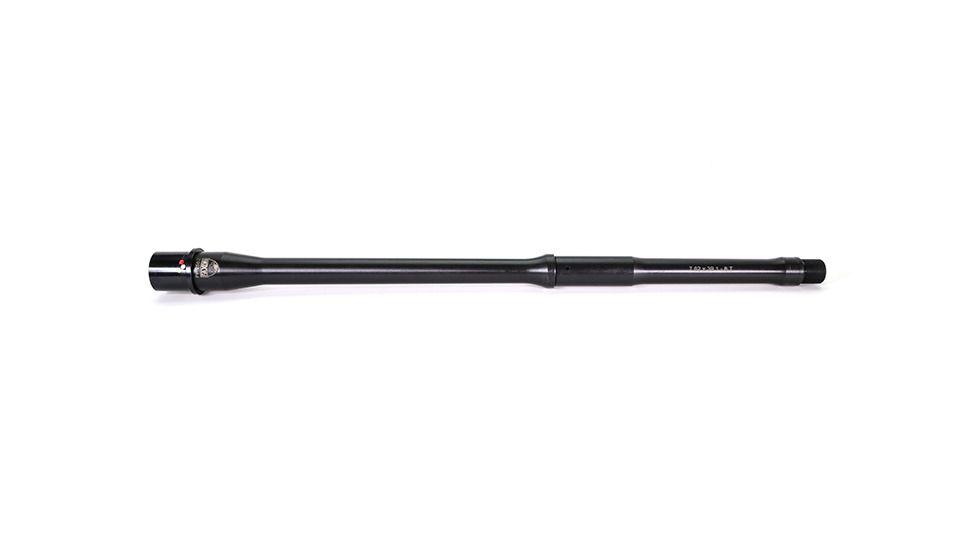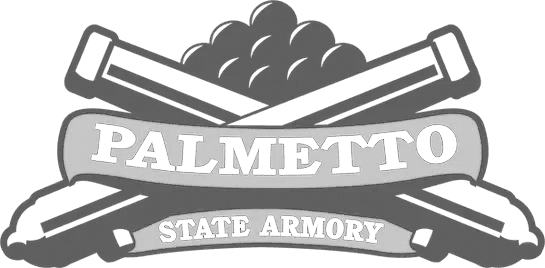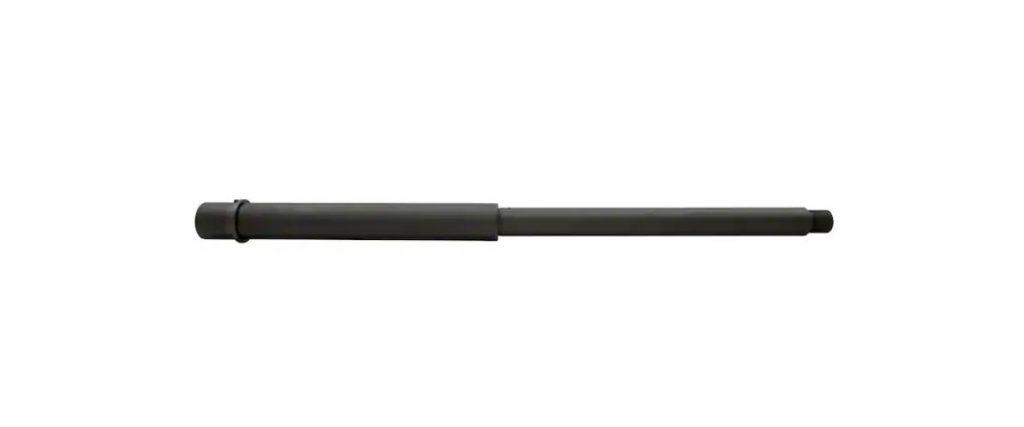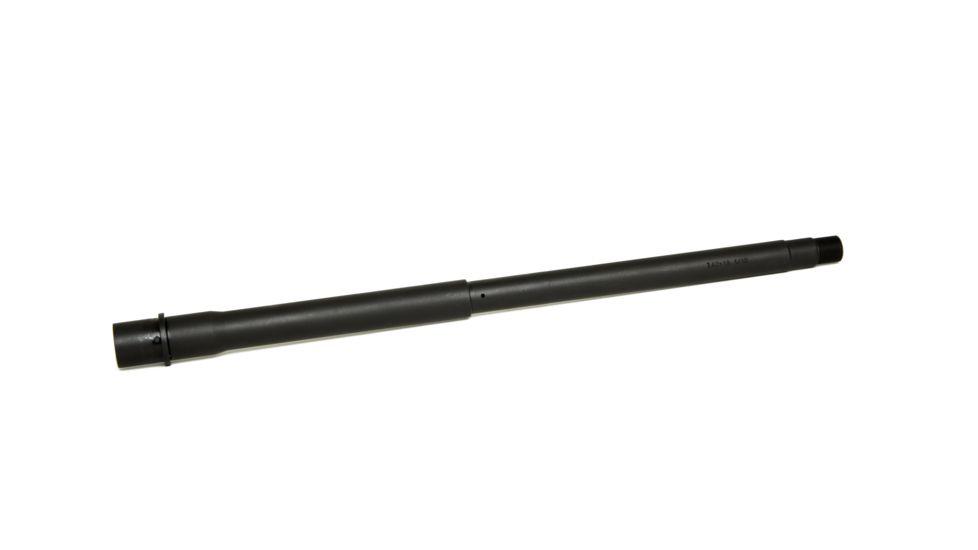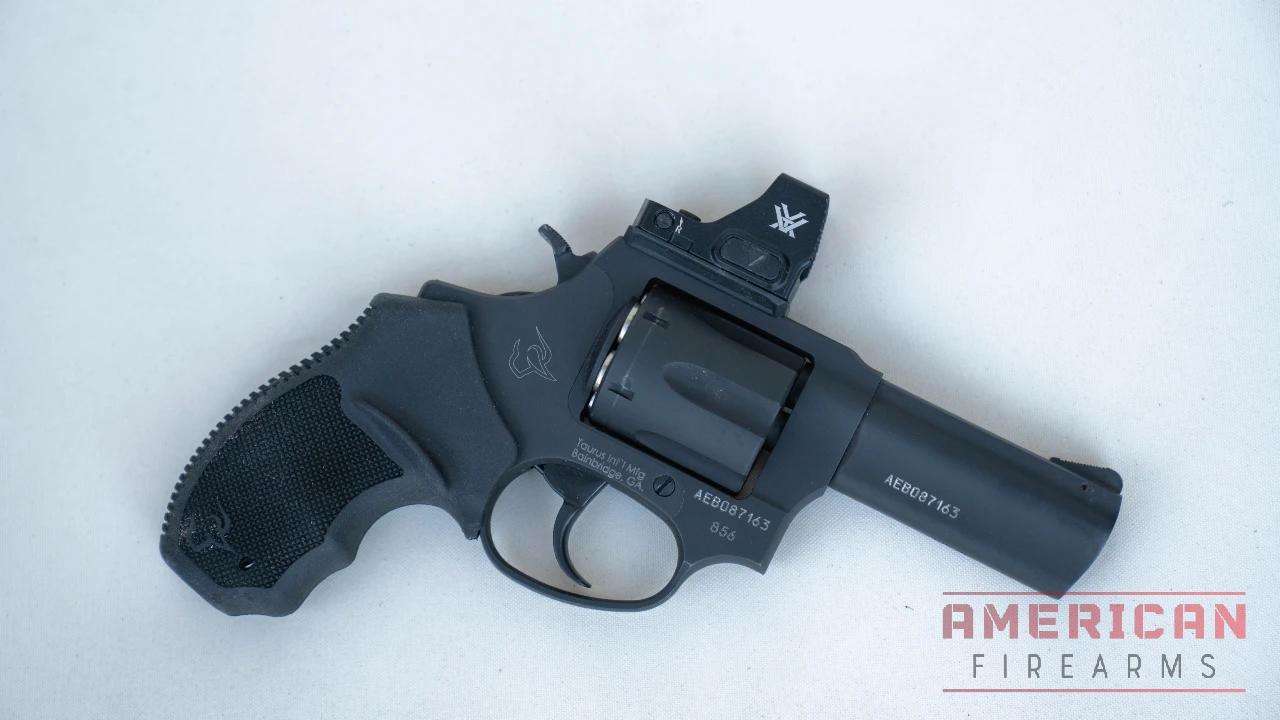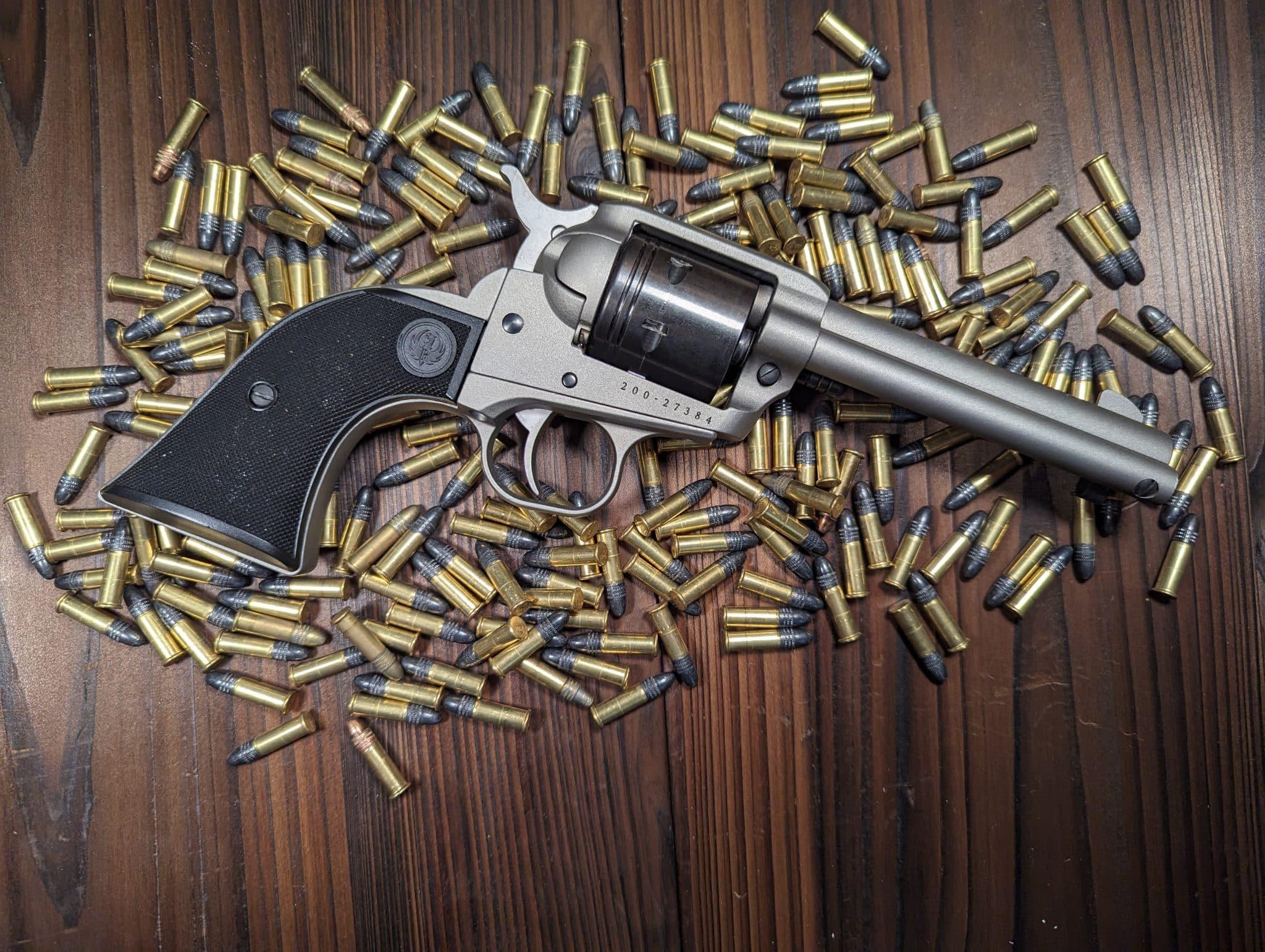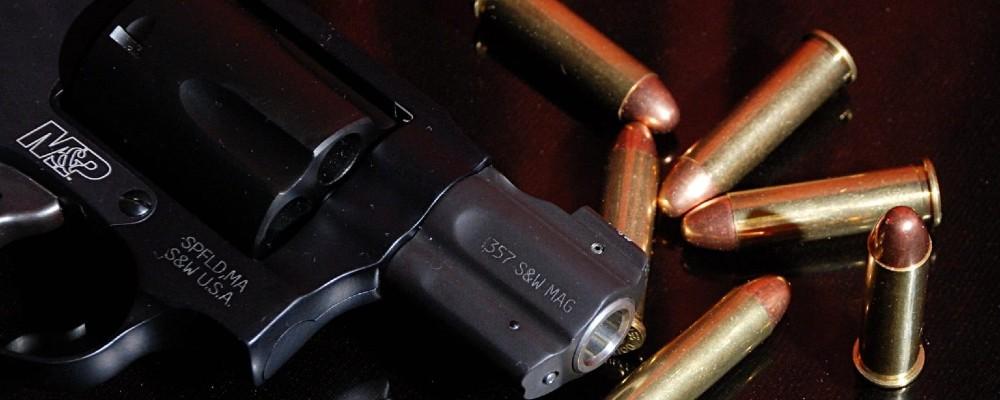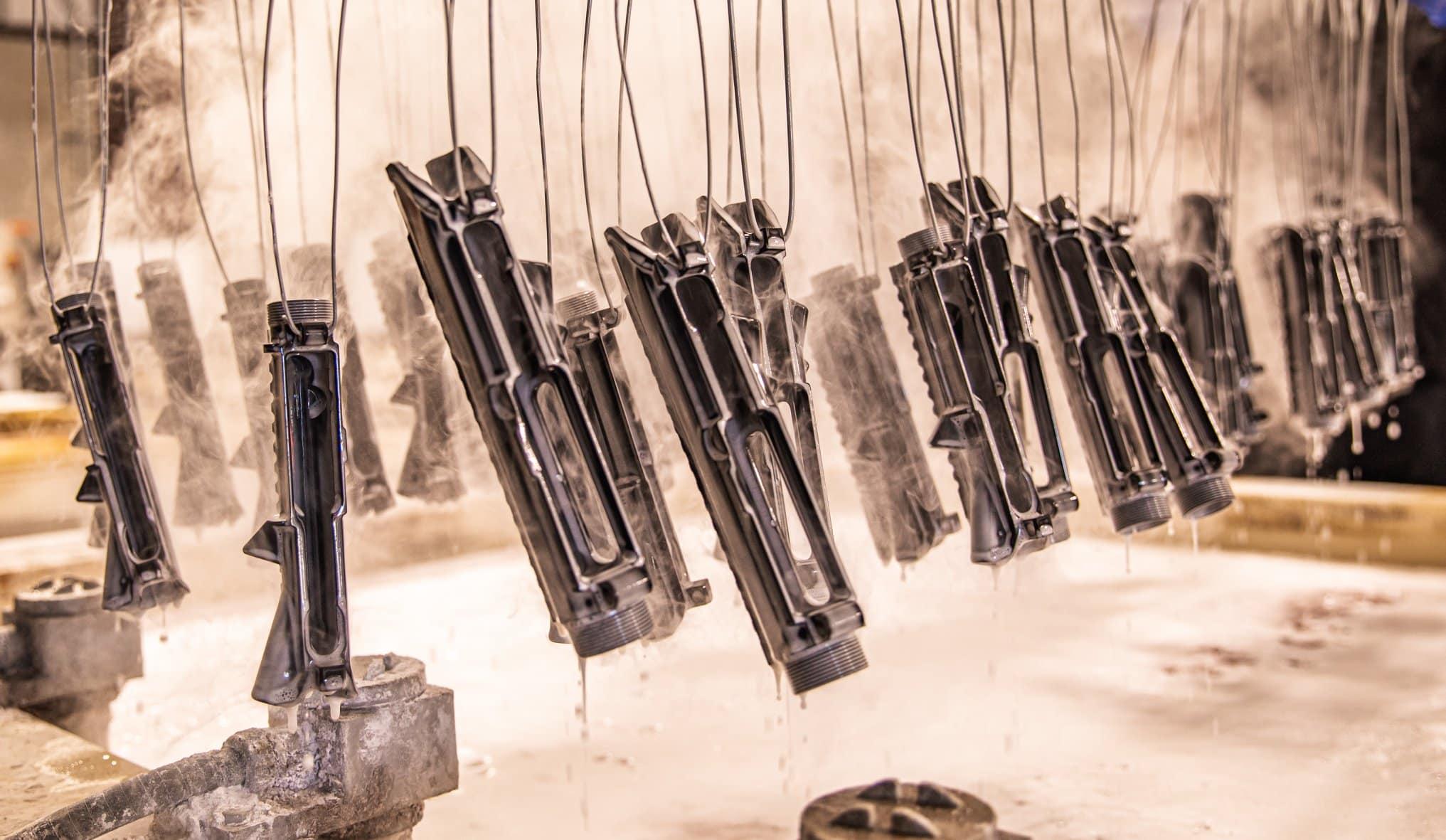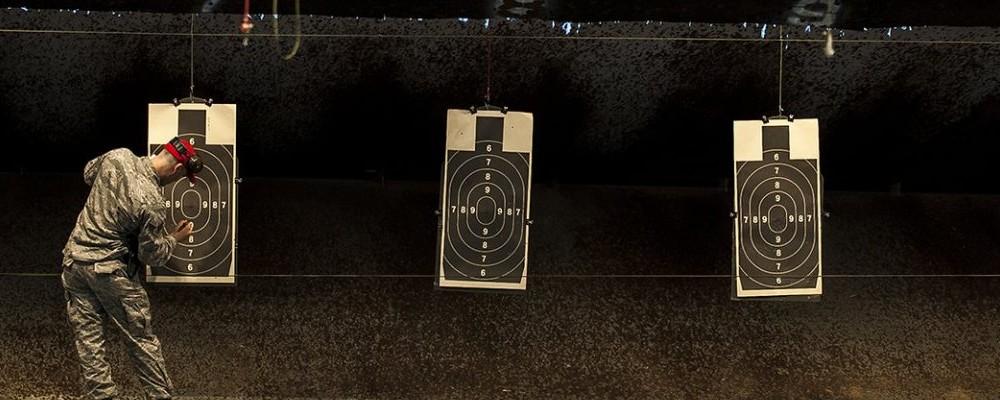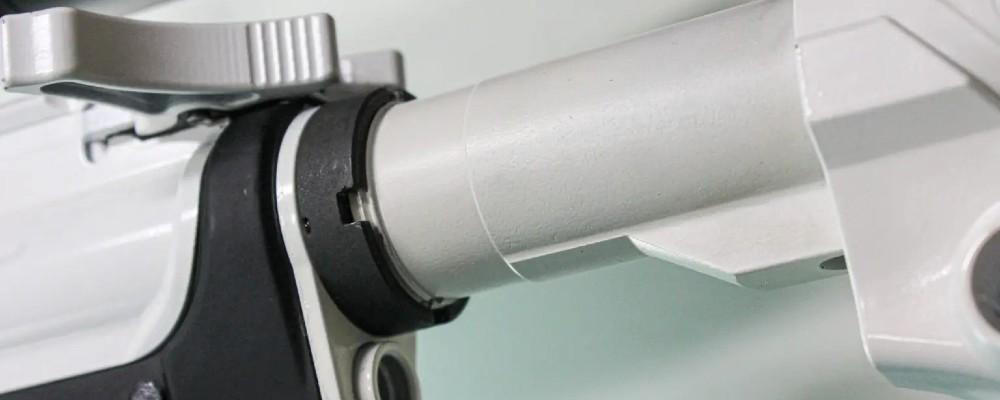The Best 7.62×39 AR Barrels
Whether an avid hunter, seasoned marksman, or novice shooter looking for something other than 5.56 NATO, finding the right barrel is where it all begins. We break down everything from budget-friendly, to lightweight and match-grade 7.62x39 AR barrel options.
Written By
Michael Crites
Licensed Concealed Carry Holder
Reviewed by
Editorial Team
Learn About The Editorial Team
Share:
Products are selected by our editors. We may earn a commission on purchases from a link. How we select gear.

Updated
Mar 2023
While most AR-15s are built with .223 or 5.56 barrels, an alternative is a 7.62×39 AR barrel. The 7.62×39 cartridge was developed by the Soviet Union in 1943 and used in weapons like the SKS, RPD, AK-47, and RPK.
While this round is not as accurate as other cartridges, it does have its purpose in modern weaponry. We dove into the best 7.62×39 AR barrels to separate the wheat from the chaff. This article is part of our ongoing Guide to Everything AR.
In This Article
7.62x39 AR Barrel Comparison
Below is my list of quality 7.62×39 AR barrels. I list the best choices in terms of value, performance, design, and cost.
Click on the name to head to the product page, read reviews and check prices or skip ahead to the list of barrels.
| Name | Selection | Price |
|---|---|---|
Best Value | $151 | |
Premium Option | $186 | |
Budget Pick | $99 | |
Pistol Pick | $114 | |
Best Build Kit | $529 | |
Best Complete Upper | $279 |
Why you should listen to us
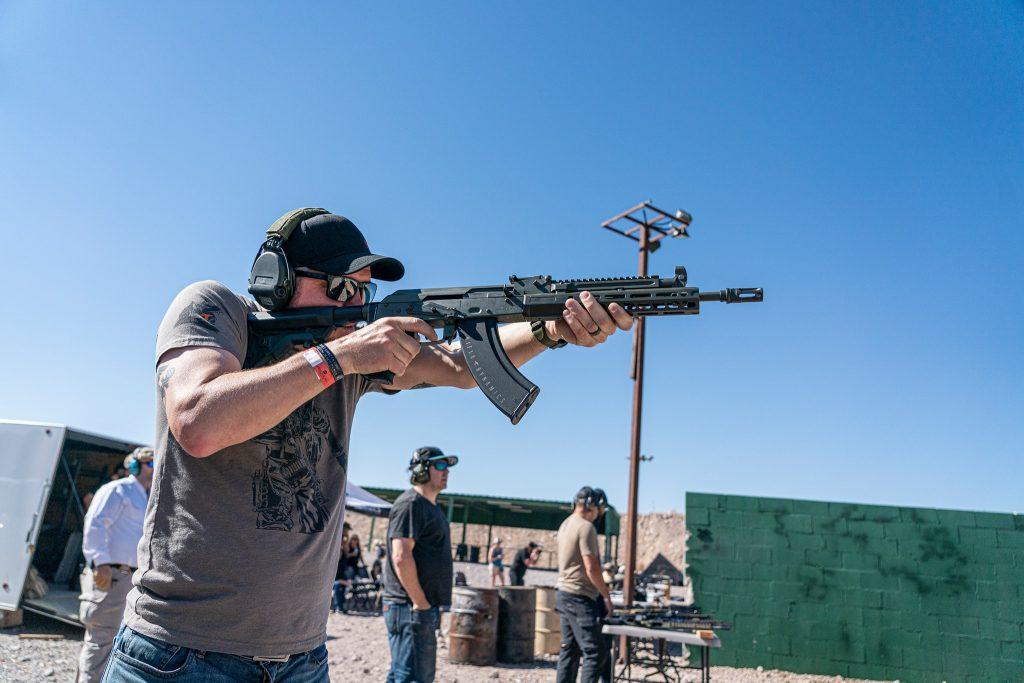
This year more than others past, the Kalashnikov-pattern rifles have seen a resurgence in the competitive shooting world. In 2019, the Red Oktober Kalashnikov Championship was started by my friend, Brian Nelson. What he thought would be a decently attended match went beyond his wildest dreams.
This year brought in shooters from different states, frequent competitive shooters from other disciplines, and your average Joe with an AK. Other events that brought back the 7.62x39mm round are the Kalash Bash event in Texas and Kalashmas events. These events celebrate all rifles and carbines with a 7.62×39 AR barrel.
One specific company that has expanded in years past with their love for the Kalashnikov style firearms is Dissident Arms. I had the opportunity this summer to visit their headquarters in Texas and check out their latest innovation of the Kalashnikov-based PCC. While this carbine is chambered in 9mm, they also make the best race-ready 7.62x39mm rifle, the new IWI Galil ACE.
The two owners of Dissident, Lan and Mike, compete all across the country, as do I in the world of 3 gun competitions. This year, they competed in the AK Masters at The Clinton House Plantation, both using the 7.62x39mm cartridge showing the world it’s possible to be competitive and place using both iron sights or an optic mounted on a Kalashnikov-based gun.
I have had a lot of time behind various firearms and have built rifles using all custom parts and customized each stock rifle to my needs. I learned early on that you need to be competitive is a good barrel and a good optic.
The rest is fluff, although I am partial to good triggers. When looking for good recommendations and information on why you should choose one barrel over another or why a specific feature is beneficial, I have first-hand experience in selecting the best barrel for the job needed.
7.62x39 AR Barrel Reviews
1. Best Value: Faxon Firearms 7.62×39 Russian Gunner Barrel
Faxon Firearms manufactures AR-15, AR-10, AK-47, and rimfire rifle barrels. They also build complete rifles, including pistol-caliber carbines. The two main 7.62×39 AR barrels are a carbine-length gas port 10.5-inch barrel and a mid-length gas port 16-inch barrel. The 16-inch barrel will feel similar to a traditional 5.56 or .223 AR-15 rifle. This barrel is great for shooters wanting a unique rifle build or wanting to be able to simply swap uppers onto their AR-15 lower to shoot different calibers.
Faxon Firearms uses 4150 CMV steel with nitride coatings paired with a 1:8 twist, a gunner barrel profile, and threaded 5/8-24 for muzzle device support.
2. Premium Option: New Frontier Armory 7.62x39mm Barrel
New Frontier Armory is a relatively new company, founded in 2009. Their factory is in Las Vegas, Nevada, where they have their CNC manufacturing plant and are a full-service firearm and class III weapons dealer. This 7.62×39 AR barrel has a carbine length gas port, M4 feed ramps, and a 1:10 twist. It is a heavy barrel profile and is compatible with 5/8-24 threaded muzzle devices.
This AR-15 16-inch barrel will be more accurate than the shorter barrel offerings available. This barrel will suit anyone wanting to plink at the range or compete in a carbine match using an AR-15 platform.
3. Budget Pick: AR Stoner 7.62x39mm AR-15 Pistol Barrel
The AR-STONER company manufactures AR-15 gun parts made in the USA. Their reputation is high-quality and high value, from complete upper assemblies to the smallest lower part. The AR-STONER 7.62×39 barrelis manufactured from 4140 Chrome Moly Steel. This specific barrel is for an AR-15 pistol and features a 1:10 twist.
The heavy contour adds longevity to the barrel life and is set up with a pistol-length gas port. This specific barrel is excellent for building a home defense or truck gun as the overall length is just 7.5 inches.
The barrel adds a little over a pound of weight and is easy for any size person to hold up in a gunfight.
4. Pistol Pick: Radical Firearms 7.62x39mm Barrel
Radical Firearms is a Title II NFA gun manufacturer. They specialize in AR rifles and AR pistols to silencers and machine guns. One thing to note is they do source their barrels from outside vendors. Radical Firearms has both 10.5-inch and 16-inch 7.62×39 barrel length options, which feature a 1:10 twist and carbine length gas port. The barrel has 5/8-24 threads for easy compatibility with most A2 flash hiders and muzzle brakes.
Their 7.63×39 barrel is also made with 4150 Chrome Moly Vanadium and has a heavy profile ensuring it is a very versatile barrel that will work well for most AR-15 applications.
5. Best Build Kit: Ghost Firearms 7.62x39mm Upper & LPK
Ghost Firearms is part of the company Grid Defense. Ghost Firearms focuses on the AR-15, AR10, and AR47. They are a smaller company with a fairly new presence, but they listen to customer feedback and apply it to future products. This complete upper receiver and lower parts kit includes a 16-inch 7.62×39 AR barrel.
The barrel has a 1:10 twist and uses a carbine-length gas port paired with an HBAR profile, which makes it more heat-resistant and the barrel more durable. This barrel would suit shooters planning to shoot high volumes of ammunition and want a barrel that’s designed for maximum durability.
6. Best Complete Upper: CBC Industries 7.62x39mm Barrel Upper Assembly
CBC Industries is a South Carolina-based company that focuses on making high-quality AR-15 components. Whether you’re a new AR builder or an AR enthusiast, this company tailors to all.
This upper assembly includes an AR-15 7.62x39mm 16-inch barrel made from 7075-T6 forged aluminum. This barrel is a 1:10 twist with a carbine length gas port and is compatible with A2 flash hiders and brakes using the 5/8-24 threads.
The barrel weight is two pounds, which will add to the final build weight of your rifle, so if mobility is your objective you may want to consider lighter-weight options. This barrel will perform well in shooting competitions and for pleasure shooting at the range.
7.62x39 History

During the Cold War, the 7.62x51mm NATO cartridge was standardized, but a primary flaw in the cartridge was the weight of the ammo. There was a distinct need for a round with similar stopping power & performance but in a lighter, smaller package — enabling infantry to carry more ammunition for the same weight.
The other problem rifles chambered in 7.62×51 were bulky and hard to maneuver. The solution to these problems was a lightweight .22 caliber cartridge, enter the .223 Remington round. Of course, the 5.56mm M193 followed, and eventually, the NATO-standardized SS109 (American M855). While America and its allies moved to the 5.56 NATO AR-15-style rifles and machine guns, the 7.62x39mm Soviet cartridge was still used by the USSR.
The 7.62x39mm round stayed in production and is now used by Americans everywhere. Surplus ammunition is (or was pre-Covid) easy to find as well as the popular AK-47 variant rifles.
The only other parts needed for a complete build different from 5.56 or .223 are a 7.62x39mm bolt carrier group and magazine chambered in its size. Plus, guns chambered in 7.62x39mm are relatively cheap compared to their AR-15 .223 and 5.56 brothers.
Beyond cost savings, the 7.62x39mm bullet shines in its ability to penetrate building materials and barriers more than .223 Remington or 5.56mm NATO cartridges thanks to its increased weight.
7.62x39 vs. Other Cartridges
.300 Blackout
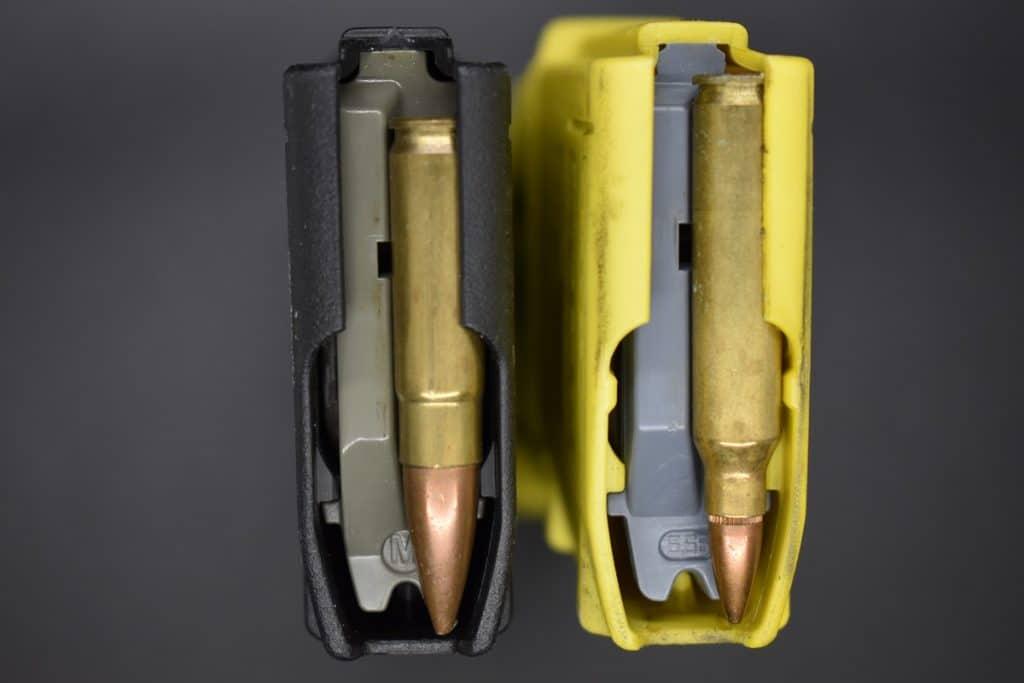
The .300 Blackout cartridge is popular for home defense and truck gun rifles with barrels also widely used in AR-15 pistol-style weapons. The .300 BLK is harder to find in ammo availability and is considerably more expensive than 7.62x39mm, however, the .300 BLK will run in .223/5.56 lowers and magazines without modification, a distinct advantage over the 7.62 round (although both require a dedicated upper and bolt carrier group.)
A concern with .300 BLK is that this ammunition will chamber in a 5.56mm AR-15 barrel but will cause a significant catastrophic issue if fired. The side benefit to 7.62x39mm rounds is that they will not chamber in a 5.56mm barrel, preventing these accidents from occurring.
The .300 BLK is a more accurate round at medium range and runs better in an AR-15 action. The .300 Blackout bullet is 110 gr to 125 gr, and velocities can range from 2,000 feet per second to 2,350 fps depending on bullet grain and velocity as compared to a 123 grain 7.62 x 39 FMJ round which runs at about 2,430 FPS with about 1653 ft-lbs. of energy.
5.56 NATO
In terms of approachable long-range accuracy and reliability, it’s hard to beat the flat-shooting 5.56mm NATO cartridge. When it comes to accuracy in a barrel of the same length, the 5.56 will outperform 7.62×39 any day of the week.
Once again, though, the 7.62×39 cartridge can be significantly less expensive to shoot and easier to find. Where 5.56 NATO falls short in comparison is creating catastrophic damage or deep penetration. The heavier bullets on offer with the 7.62x39mm can penetrate car doors, concrete, brick, and more, over its 5.56mm counterpart.
Optimal AR-15 barrel lengths for 5.56mm is a minimum of 16 inches with a higher twist rate for maximum performance, but it is still accurate in short barrels. The 5.56 bullet also has a wider array of weights, jackets, and bullet designs — available in grains from 40 gr to 112 gr, with the most common being 55 grain. A 5.56 NATO round can travel 3,025 feet per second, making this a mighty round with many benefits.
9mm

The 9mm cartridge is possibly the most widely available and popular round manufactured. It’s difficult to compare a pistol caliber to a rifle caliber, but given the popularity of PCCs and large-format pistols using the round it made sense to pair these two. The 9mm is considerably smaller, ranging from a low 65 gr to a heavy 165 gr bullet. The 9mm bullet puts up slower velocities than a rifle round at 1,180 fps to 1,400 fps.
When compared to 7.62×39, 9mm delivers nowhere near as much downrange kinetic energy as a 7.62×39 bullet. However, 9mm is often more accurate, even at a distance, than 7.62×39.
Types of 7.62x39 AR Barrels
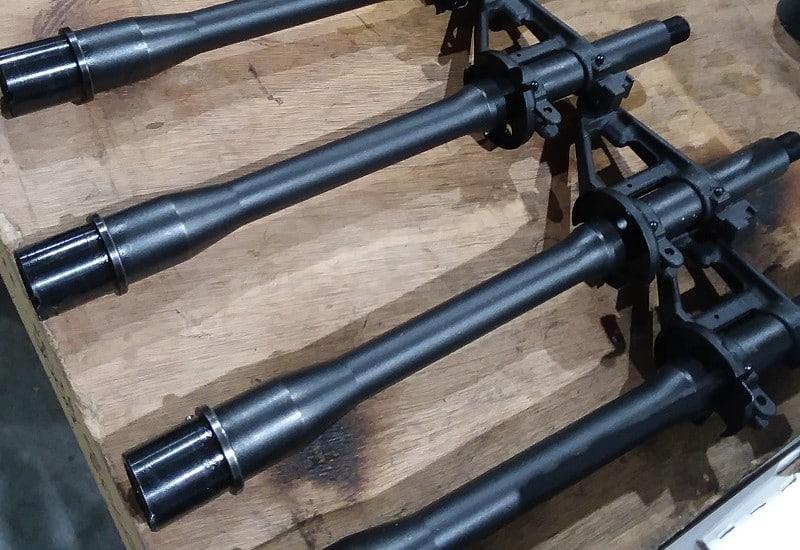
Before making a barrel purchase, you need to know the difference in the overall length and the different system’s lengths. You also have to make sure your gas system and barrel are compatible because you cannot use a rifle-length system on a pistol-length barrel, for example.
If you want a refresher on gas system implications check out our gas system guide.
Pistol Length
A pistol-length barrel (generally under 10 inches in length) will assist in crafting an AR or AK pistol and short-barreled rifle and will need to be paired with a pistol-length gas system (the shortest there is). In these barrel lengths, the bullet leaves the barrel quickly, with gas pressure still high, so the felt recoil is higher than other gas systems and the shooting experience tends to be, uh, rowdy. Pistol-length gas systems are used on barrels less than 10 inches but use a standard gas tube and gas block.
The following three systems will have less felt recoil and a smoother action the longer you go.
Carbine-Length
The carbine-length gas system is a step up from pistol-length and was developed for short barrels, such as the 10.5-inch barrels you commonly see. This system is also used in the M4’s with the 14.5-inch barrel to accommodate the bayonet to interface with the gas block and end of the barrel. The carbine-length gas system is used with 10 to 18-inch barrels.
Mid-Length
The mid-length gas system was developed when the civilian market wanted to allow a bayonet to interface on a 16-inch barrel. The mid-length gas system is used with 14 to 20-inch rifle barrels.
Rifle-Length
A rifle-length gas system is the longest gas system available, used in barrels over 20 inches in length. This gas system was mainly used in the weapons of the Vietnam War in the original AR-15/M16 models that had a 20-inch barrel.

Important 7.62x39 AR Barrel Features
Material
- 4140 steel. The material of a barrel can affect accuracy, barrel durability, and how well it emits heat dissipation. Most of your budget barrels will be made with 4140 steel. If you want a more accurate barrel at a distance or to use in competition, this is not match-grade steel. The 4150 barrel has more carbon, increasing both accuracy and the barrel’s life.
- Chrome Moly Vanadium 4150. The Chrome Moly Vanadium 4150 is the answer for a competition-ready barrel. It allows for more precision shooting and at a slightly higher cost.
- 416R Stainless Steel. Lastly, the 416R stainless steel material is the top of the line regarding accuracy. Stainless steel resists heat better than other steels and increases accuracy. These barrels are used explicitly in competitions for sub-MOA accuracy with match-grade ammunition. This barrel would also be the only one I’d recommend to use for hunting, so you make clean kills.
- Barrel Coatings. The coating of the barrel material is also essential. You can purchase a nitride-treated barrel, chrome barrel, and even a cerakoted barrel for added corrosion resistance. Barrels can be cerakoted in various colors, including burnt bronze and OD green favorites.
Length
The length of your barrel is a personal preference as well as a purpose-driven choice. Remember that your final build may include a flash hider, muzzle brake, or suppressor, which will add to your barrel extension. See the Type section above for details on the implications of barrel length. You may also find some products offer a barrel extension and locator pin to streamline the assembly process
Twist Rate
The twist rate refers to the rate of spin in the rifle barrel and is represented in inches per revolution. It’s critical that the barrel has an appropriate twist rate to stabilize the bullet in flight. A barrel that is a 1:10” twist means that the rifling will spin the bullet one revolution every 10 inches.
One thing to note is that your bullet can only make this revolution if there is enough barrel to do so. In a 20-inch barrel with a 1:10” twist, a bullet can make two revolutions vs. one and some change out of a 16-inch barrel.
The lower the number of the twist, the faster the twist rate of the bullet, and the faster the bullet will spin (e.g. a 1:8” twist rate is faster than a 1:10”, which is faster than a 1:12”, etc.)
There isn’t a one size fits all or a specific twist rate that performs better over another, but generally, longer bullets benefit from fast twist rates, where shorter bullets work better with slower twist rates.
Also, twist rate recommendations for bullets are generally floors, not ceilings, so a bullet with a twist recommendation of 1:10” will be stable when fired from a 1:10” twist barrel or faster. Meaning you can use a 1:10” or 1:9”, but a 1:12” may not provide adequate stabilization.
When choosing a barrel, the variables you want to know are what grain bullet you plan to use, what barrel length, and the twist rate.
It is best to open a browser to look for the company’s projectile data out of different length barrels to get the velocity and accuracy information.
Barrel Profile
Shooters prefer to know the rifle’s purpose to choose the correct barrel for the job, rather than forcing one to perform in a way for which it’s not engineered.
The profile of a barrel refers to the thick and thin points on the barrel and its weight and specific purpose of use. A heavier barrel will be much more accurate & have better heat dissipation, but won’t save you any weight on a rifle build. Lighter barrels are essential for a mobility-focused self-defense gun, clearing buildings, or other close-quarters combat requirements.
If you plan on shooting thousands of rounds through a barrel, accuracy will degrade as it heats up, so heavier is better. If you use a lightweight barrel, they will wear faster — meaning you will need a new barrel sooner than if you were to use a heavy profile barrel.
Heavy (HBAR = Heavy Barrel AR)
Heavy barrels are for consistent fire, getting the most accuracy out of your barrel, and are the best when it comes to controlling heat dissipation. These barrels are usually as thick as possible and thin as they taper towards the end of the barrel for balance.
Government/M4
The Government profile has a thin .625-inch barrel width behind the gas block and .750 inch barrel width in front of the barrel. The difference in the M4 is it has a narrow cut-out in the .750 portion of the barrel for the M203 grenade launcher.
Fluted Barrels
A fluted barrel pairs durable material with sculpting which removes portions not essential to the barrel’s accuracy from the barrel to reduce weight. Many competition rifles use a fluted barrel to keep accuracy but reduce the gun’s total weight.
Pencil Barrels
Pencil barrels are thick where they join the upper receiver and then taper off quickly to be thin and lightweight. These make great beginner rifles for youth and smaller shooters and ones you can use for long periods without feeling fatigued. These are available in a variety of lengths and the design doesn’t impact gas block or port placement.
Gunner Barrels
One of the unique products from Faxon Firearms is that they have distinctive Gunner profile barrels. These blend the government and pencil profiles to combine durability with weight savings.
Want more barrel? Take a dive into our AR barrel guide.
Why use a 7.62x39 AR Barrel?
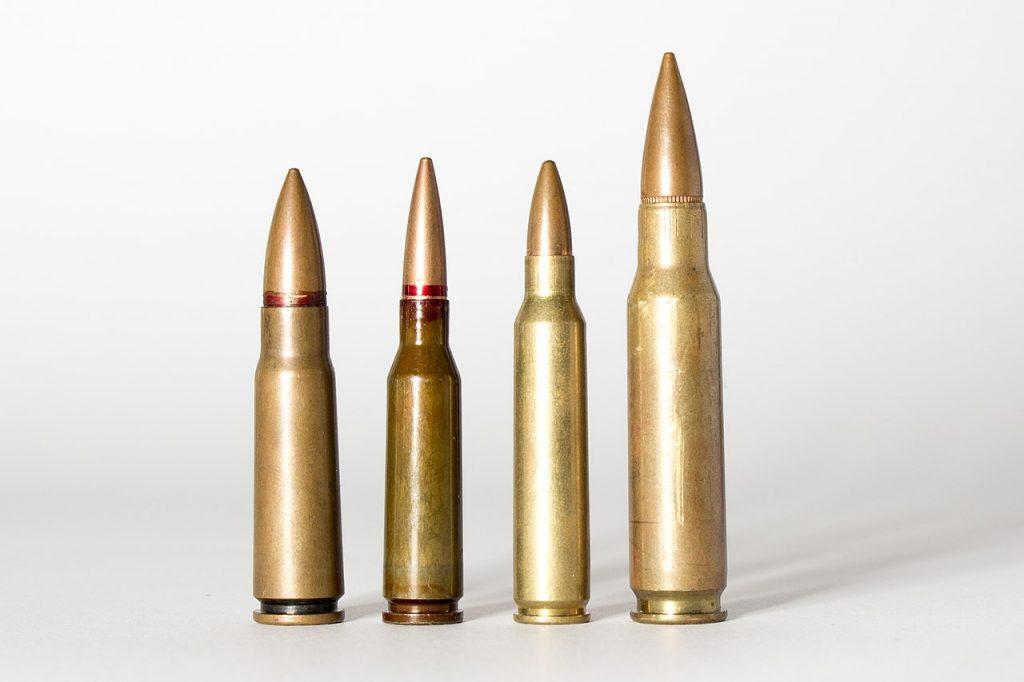
Especially during the ammo crunch brought on by these post-Covid times, there has hardly been a better time to try a 7.62×39 barrel because it’s often easier to find 7.62 ammo relative to other rifle calibers. In terms of self-defense, small AR pistols or short-barreled rifles chambered in 7.62x39mm make great defensive firearms for travel, at home, or everyday use.
One of the best advantages of assembling a complete upper using a 7.62×39 AR barrel is swapping uppers on your AR-15 build takes seconds. Just make sure you’re using the correct magazine and ammunition when you switch between the two uppers.
The 7.62x39mm is just as capable of protecting you at close range as any other caliber on the market. Guns are tools, and as long as yours feeds reliably, it will get the job done.
Shortcomings
A rifle fully loaded with 7.62x39mm ammunition will weigh more than a like rifle using a 5.56mm loadout, in part owing to the 7.62 being — on average — about twice the bullet weight of the 5.56mm. That extra weight means the round takes more energy to keep moving, which leads to almost twice the bullet drop when compared to the 5.56mm, meaning the 7.62 cartridge is less accurate at a distance than other rifle calibers.
The best upgrade you can make to increase accuracy is a barrel upgrade, so if you don’t have the budget and want to shoot long distances, stick to .223 or 5.56.
The 7.62x39mm cartridge also delivers twice the recoil energy of the .223/5.56 NATO round (6.9 lbs vs 4 lbs for the .223) making control and follow-up shots more challenging with the Soviet round.
7.62x39mm AR Barrel Price Ranges
The most significant differences in price and features are the material and profile — both of which can affect the barrel’s durability is and the amount of material required to manufacture it.
- $100-$300. Look at the prices of barrels as a tier system. As you increase the quality of steel, you grow in price. Realistically, spending between $100-$300 on a barrel is reasonable. The barrel is the primary performance component of the entire gun.
- Over $300. Premium barrels made with better steel to increase accuracy can be upwards of $300, so be sure to budget for this in the cost of your build.
How we selected our recommendations
While we prefer to subject barrels to extreme heat and use tests, we leaned on personal experience, online reviews, and discussions with industry experts to recommend the best 7.62×39 AR barrel.
As much as I would love to put all these 762 AR uppers to the test there are times when certain products or categories are a real challenge — be it availability, cost, or simply a lack of resources — we can get stymied going hands-on with all the potential candidates. Rather than present a never-ending list of all the 7.62×39 uppers on the planet, we selected those that we felt best represent the price points laid out above — giving you a solid representational list to serve as a jumping-off point for your own research (you are going to do you own research, right?)
To avoid disappointment or steering you in the wrong direction, we bolster our own experience with conversations with experts, comb through reviews on retailer sites & sales data, review industry publications, and other blogs, and otherwise surface the best information available.
We aim for all thriller, no filler, as they say.
Updated
March 14, 2023 — After reassessing the information in this guide, we continue to stand by our barrel picks. We’ve updated images and links where appropriate.
Sign up for our newsletter
Get discounts from top brands and our latest reviews!

